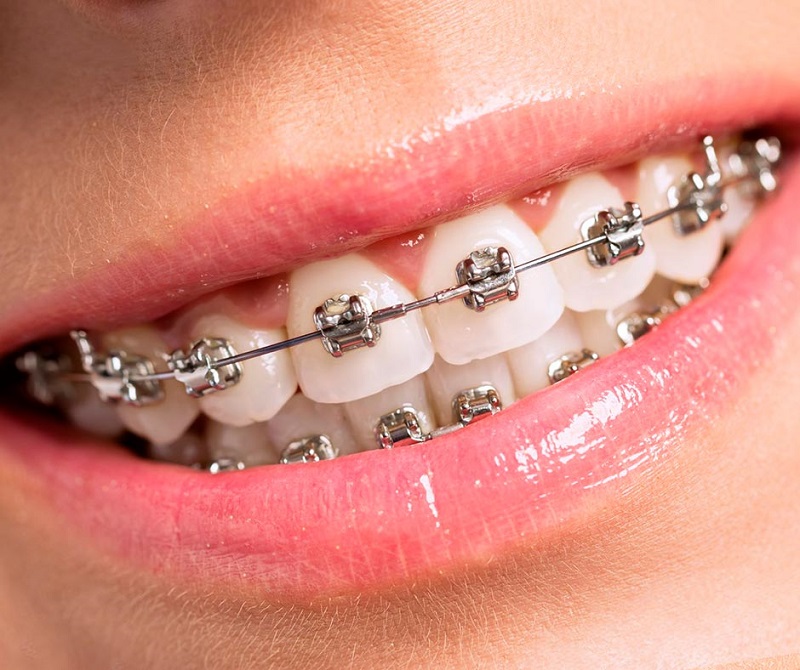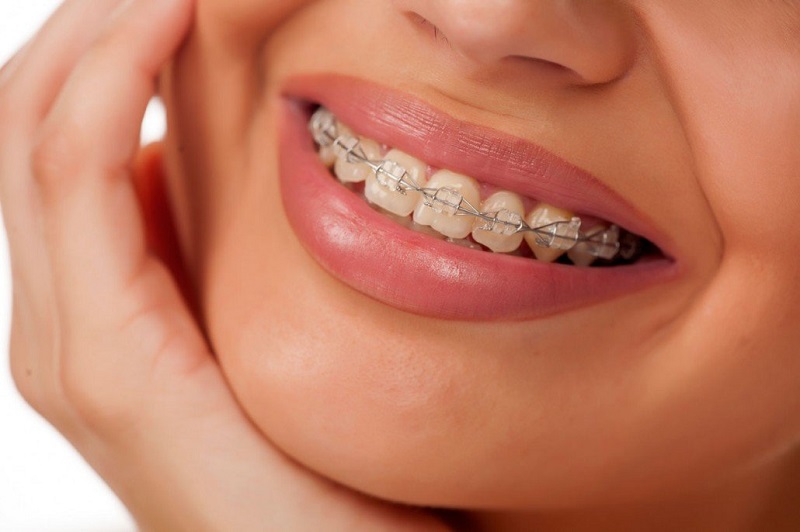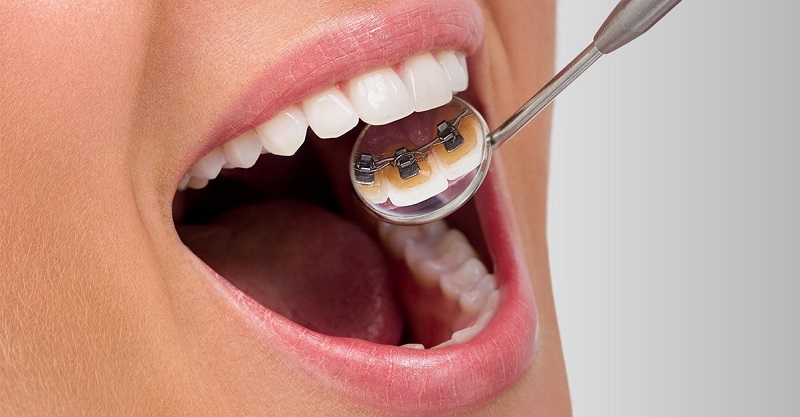What are the types of braces, and how do they differ from each other?
The need for orthodontic treatment can arise at any age. Correction of the bite with the help of special braces can be carried out for both children and adults. Of course, at an early age - 13-15 years braces will fix the bite or correct the displacement of teeth much faster than with a treatment in 30-40 years.
There are different types of braces, each of which is chosen depending on the structure of the jaw, the age of the patient, and the purpose of treatment. We will tell you what bracket systems are, what their price depends on, and also consider the main stages of installing braces.
The doctors of our clinic provide a turnkey Braces service. It includes initial consultation, individual design selection, sanitation of the oral cavity, installation, control, removal, and subsequent installation of retainers.
What types of braces are there
The bracket system consists of an arc on which brackets are strung. Depending on the construction type, they are attached in front or behind the tooth, and the arc pulls crooked elements in the direction the orthodontist sets.
The differences between braces are based on the following:
- Material of manufacture: sapphire, metal, plastic, ceramic, combined braces.
- Method of fastening: vestibular (external) and lingual braces (installed from the inside).
- The method of joining to the arc: without ligatures and with ligatures.
The manufacturers of braces with whom we cooperate are leaders in the industry, so we boldly guarantee the quality and effectiveness of the procedure, regardless of the type of braces.

Vestibular braces
These braces are fixed on the teeth in front. They are made of different materials:
- Ceramic bracket system. These are matte braces; the color can be chosen as suitable as possible for the enamel. Do not fade and do not stain over time; durable and reliable.
- Sapphire braces. Transparent, shiny, and quite expensive.
- Metal braces. They are practical, reliable, and relatively affordable, but they don't look very aesthetically pleasing, which scares many away.
Lingual braces
They are almost invisible because they are attached to the inner surface of the teeth. Most often, they are chosen by those who, due to their duty, must communicate a lot with people. According to patients, the only drawback of invisible braces is the high price and significant impact on diction during the habituation period.
If the jaws have different degrees of pathology, the doctor will suggest using a combined bracket system. The traditional model is installed on the 1st jaw, which is more complex, and the internal bracket system is installed on the one that needs less correction.
Ligature braces
It is a traditional type of attachment. Silicone rings or metal elements hold the arc. The bracket system is affordable and effective. Among the disadvantages of metal ligature braces are long adaptation and difficulties in care. In this regard, the doctor has to be visited more often.
Ligature-free braces
They are also called self-ligating; unlike ligature braces, they do not cause discomfort and require less frequent correction. Such a system has many advantages: quick installation, easy maintenance, and the effect manifests itself faster. However, a ligature-free bracket system cannot be used in some pathologies, which is their only drawback.
Today, the American Damon system is gaining popularity — compact and easy to install.
In any case, when choosing a bracket system, the decision is up to the attending orthodontist. Inconspicuous and aesthetically attractive designs can be ineffective in difficult situations.
Indications and contraindications
Indications for correcting the bite with braces include:
- crooked teeth;
- tightness of the smile and a feeling of discomfort in society;
- malocclusion;
- anomaly of single teeth or the entire dentition;
- preparation for prosthetics.
Among the contraindications to straightening teeth with braces:
- the teeth are too close to each other;
- narrow jaw;
- small crown height, at which the installation of brackets becomes impossible;
- age up to 12 years;
- inflammatory processes in a neglected form;
- Severe diseases of internal organs, especially in the acute stage, as well as diseases of the nervous and endocrine systems and mental disorders.

Installation steps
The treatment duration depends on the patient's anatomical features and the presence of concomitant problems requiring treatment. The process of installing ceramic braces or any other takes place according to the following scheme:
- Consultation, during which the doctor analyzes the situation.
- Sanitation of the oral cavity.
- X-ray and get casts.
- Fastening of brackets on special cement.
- System activation.
- Consultation and appointment of scheduled examinations (once every 1-3 months, depending on the installed model).
- Removal of the structure.
- Re-sanitation of the oral cavity, remineralization, and fluoridation.
- Installation of retainers that prevent the reverse movement of teeth.
Depending on the situation's complexity, the body's characteristics, and the chosen braces, wearing a bracket system on the upper and lower jaw can take six months to 2 years. And it will take the same amount to wear retainers.

Bracket system for adults
Constructions for adults are more rigid, and the pressure on dentition is more substantial. Wearing braces for an adult of 30-40 years is prescribed for at least a year. Aesthetics are more important for adults than for children. In the case of children, the emphasis is not on aesthetics but efficiency. But the doctor will offer the final choice based on the indications and the collected anamnesis.
Correction of the bite with braces in adults is more complicated and takes longer since the jaw is already formed. In addition, adults are more likely to suffer from dental diseases: caries, periodontal disease, and other inflammatory processes that need to be eliminated before the installation of braces.
Prices for teeth alignment with braces in adults are higher than for children and depend on the chosen material and design.
Braces for children: cost and installation
Correction of the bite with braces in children and adolescents takes about 1.5-2 years. From 12 to 18, permanent teeth are in the active growth phase; a bite is formed. The jaw is already strong enough but still malleable. It is the perfect time for the treatment of bite braces. It is not recommended to install them earlier because of the high risk of damaging the enamel of the teeth, which is still very soft during this period.
Children's constructions are more plastic, as they are made of a softer material. But externally and according to the exposure method, they practically do not differ. The cost of installing braces for children is lower than for treating adults.
The most popular in children's orthodontics are metal structures because when installing children's braces, the first place is not aesthetics but efficiency. Ceramic and sapphire braces are also put on, but less often: the first ones are pretty fragile, and the second ones are too expensive.
Installing braces in the "Smile Factor."

We cooperate with trusted suppliers, installing only reliable, high-quality devices. The assortment includes only the best bracket systems - ligature metal structures Mini Master, self-regulating systems H4 and Damon Clear, Flexiligner Easy, Extra, Light, and Pro with a different number of aligners and for both jaws, Flexiligner Kids Flexi-start (4 options designed for different amounts of time). The doctor will tell you how much it costs to install one or another type of braces after an examination and analysis of the situation.
Orthodontists will make your stay in the clinic as comfortable and painless as possible. Over the years of practice, the clinic has helped a considerable number of patients to install braces, get rid of orthodontic problems, and find a dream smile!
